£ 192.00
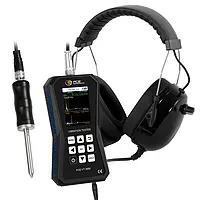


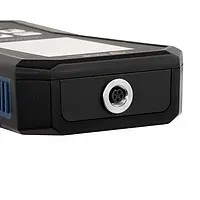
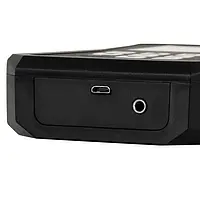

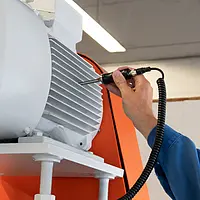


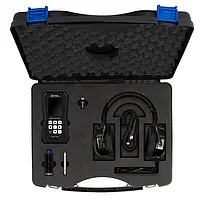
| Measuring range | Acceleration |
| 0.0 ... 399.9 m/s² / 0.0 - 15744 in/s² | |
| Resolution | 0.1 m/s² / 3.94 in/s² |
| Accuracy @ 160 Hz | ±2 % |
| Frequency range | 10 Hz ... 10 kHz |
| 1 kHz ... 10 kHz | |
| Measuring range | Velocity |
| 0.00 ... 399.9 mm/s / 0.00 - 15.74 in/s | |
| Resolution | 0.1 mm/s / 0.0039 in/s |
| Accuracy @ 160 Hz | ±2 % |
| Frequency range | 10 Hz ... 1 kHz |
| Measuring range | Rotational Speed |
| 600 ... 50000 RPM | |
| FFT acceleration | 10 Hz ... 8 kHz |
| FFT velocity | 10 Hz… 1 kHz |
| Accuracy @ 160 Hz | ± 2% |
| Number of FFT lines | 2048 |
| Route measurement | 100 routes each with 100 machines each with |
| 100 measuring points with 1000 measured values each | |
| Measuring range | Displacement |
| 0.000 ... 3.9 mm / 0.000 - 0.154 in | |
| Resolution | 1 µm / 39.4 µin |
| Accuracy @ 160 Hz | ±2 % |
| Frequency range | 10 Hz ... 200 Hz |
| Measurement parameters | RMS, Peak, Peak-Peak |
| Crest factor | |
| Manual memory | 99 folders with 50 measured values each |
| Data logger | Various start/stop triggers |
| Measurement interval between 1 s … 12 h | |
| 50 memory locations with 43200 measured values each | |
| Units | can be switched to metric / imperial |
| Display | 2.8" LC display |
| Menu languages | English, German, French |
| Spanish, Italian, Dutch | |
| Portuguese, Turkish, Polish | |
| Russian, Chinese, Japanese | |
| Power supply | internal: LiPo battery (3.7 V, 2500 mAh) |
| external: USB 5 VDC, 500 mA | |
| Headset connection | 3.5 mm jack plug |
| Protection class | IP52 |
| Operating time | ca. 15 … 20 h (depending on display brightness) |
| Operating and storage conditions | temperature: -20 ... +65 °C / -4 ... 149 °F |
| humidity: 10% RH ... 95% RH, | |
| non-condensing | |
| Dimensions | 165 x 85 x 32 mm / 6.5 x 3.3 x 1.3" |
| Weight | 239 g / 8.4 oz |
| Technical Data Vibration Sensor | |
| Resonance frequency | 24 kHz |
| Transverse sensitivity | ≤ 5% |
| Destruction limit | 5000 g (peak) |
| Operating and storage temperature | -55 °C … +150 °C / -67 °F ... 302 °F |
| Housing material | stainless steel and plastic |
| Mounting thread | ¼ - 28“ |
| Dimensions | Ø 17 x 46 mm / 0.67 x 1.8" |
| Weight (without cable) | 119 g / 4.2 oz |